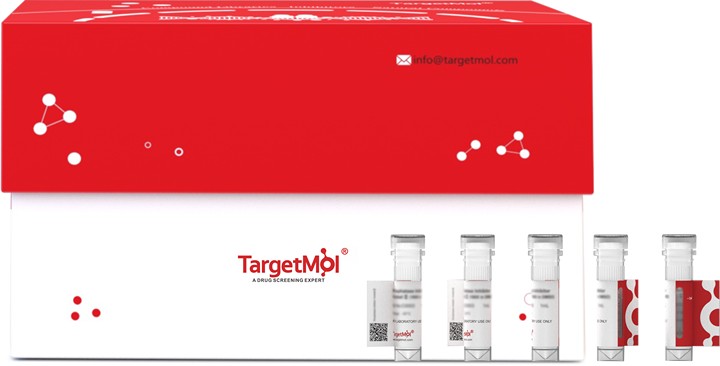 您的购物车当前为空
您的购物车当前为空
S100B Protein, Mouse, Recombinant (His)
一键复制产品信息S100-B, is an acidic protein with a molecular weight of 21 kDa belonging to the S100 family. S100-B contains two EF-hand-type calcium-binding motifs separated by a hinge region with a hydrophobic cleft. S100-B plays an important role in neurodevelopment, differentiation, and brain construction. S100-B has neuroprotective effects, but at high concentrations S100-B is neurotoxic. Extracellular concentration of S100-B increases following brain damage, which easily penetrates into cerebrospinal fluid in brain damage and then into the blood. S100-B is expressed and produced by astrocytes in vertebrate brains and in the CNS, and the astrocytes are the major cells producing S100-B protein in gray matter, as well as oligodendrocytes are the predominant S100-B in protein producing cells in white matter. The major advantage of using S100-B is that elevations in serum or CSF levels provide a sensitive measure for determining CNS injury at the molecular level before gross changes develop, enabling timely delivery of crucial medical intervention before irreversible damage occurs. In addition, S100-B, which is also present in Mouse melanocytes, is a reliable marker for melanoma malignancy both in bioptic tissue and in serum.

S100B Protein, Mouse, Recombinant (His)
一键复制产品信息| 规格 | 价格 | 库存 | 数量 |
|---|---|---|---|
| 5 μg | ¥ 456 | 6-8日内发货 | |
| 10 μg | ¥ 740 | 6-8日内发货 | |
| 20 μg | ¥ 1,120 | 5日内发货 | |
| 50 μg | ¥ 1,970 | 5日内发货 | |
| 100 μg | ¥ 3,380 | 5日内发货 | |
| 200 μg | ¥ 5,850 | 5日内发货 | |
| 500 μg | ¥ 12,100 | 5日内发货 | |
| 1 mg | ¥ 17,300 | 5日内发货 |
产品信息
| 生物活性 | Activity has not been tested. It is theoretically active, but we cannot guarantee it. If you require protein activity, we recommend choosing the eukaryotic expression version first. |
| 产品描述 | S100-B, is an acidic protein with a molecular weight of 21 kDa belonging to the S100 family. S100-B contains two EF-hand-type calcium-binding motifs separated by a hinge region with a hydrophobic cleft. S100-B plays an important role in neurodevelopment, differentiation, and brain construction. S100-B has neuroprotective effects, but at high concentrations S100-B is neurotoxic. Extracellular concentration of S100-B increases following brain damage, which easily penetrates into cerebrospinal fluid in brain damage and then into the blood. S100-B is expressed and produced by astrocytes in vertebrate brains and in the CNS, and the astrocytes are the major cells producing S100-B protein in gray matter, as well as oligodendrocytes are the predominant S100-B in protein producing cells in white matter. The major advantage of using S100-B is that elevations in serum or CSF levels provide a sensitive measure for determining CNS injury at the molecular level before gross changes develop, enabling timely delivery of crucial medical intervention before irreversible damage occurs. In addition, S100-B, which is also present in Mouse melanocytes, is a reliable marker for melanoma malignancy both in bioptic tissue and in serum. |
| 种属 | Mouse |
| 表达系统 | E. coli |
| 标签 | C-6xHis |
| 蛋白编号 | P50114 |
| 别名 | S100b,S100 β,S-100 protein β chain,S-100 protein subunit β,S-100 protein subunit beta,S-100 protein beta chain,S100 calcium-binding protein B,S100 calcium binding protein B,S100 beta,Protein S100-B |
| 氨基酸序列 | Met1-Glu92 |
| 蛋白构建 | Met1-Glu92 |
| 蛋白纯度 | Greater than 95% as determined by reducing SDS-PAGE. (QC verified)  |
| 分子量 | 12 KDa (reducing condition) |
| 内毒素 | < 0.1 ng/µg (1 EU/µg) as determined by LAL test. |
| 缓冲液 | Lyophilized from a solution filtered through a 0.22 μm filter, containing 20 mM PB, 150 mM NaCl, pH 7.4. |
| 复溶方法 | Reconstitute the lyophilized protein in distilled water. The product concentration should not be less than 100 μg/ml. Before opening, centrifuge the tube to collect powder at the bottom. After adding the reconstitution buffer, avoid vortexing or pipetting for mixing. |
| 存储 | Lyophilized powders can be stably stored for over 12 months, while liquid products can be stored for 6-12 months at -80°C. For reconstituted protein solutions, the solution can be stored at -20°C to -80°C for at least 3 months. Please avoid multiple freeze-thaw cycles and store products in aliquots. |
| 运输方式 | In general, Lyophilized powders are shipping with blue ice. Solutions are shipping with dry ice. |
| 研究背景 | S100-B, is an acidic protein with a molecular weight of 21 kDa belonging to the S100 family. S100-B contains two EF-hand-type calcium-binding motifs separated by a hinge region with a hydrophobic cleft. S100-B plays an important role in neurodevelopment, differentiation, and brain construction. S100-B has neuroprotective effects, but at high concentrations S100-B is neurotoxic. Extracellular concentration of S100-B increases following brain damage, which easily penetrates into cerebrospinal fluid in brain damage and then into the blood. S100-B is expressed and produced by astrocytes in vertebrate brains and in the CNS, and the astrocytes are the major cells producing S100-B protein in gray matter, as well as oligodendrocytes are the predominant S100-B in protein producing cells in white matter. The major advantage of using S100-B is that elevations in serum or CSF levels provide a sensitive measure for determining CNS injury at the molecular level before gross changes develop, enabling timely delivery of crucial medical intervention before irreversible damage occurs. In addition, S100-B, which is also present in Mouse melanocytes, is a reliable marker for melanoma malignancy both in bioptic tissue and in serum. |





 |
|